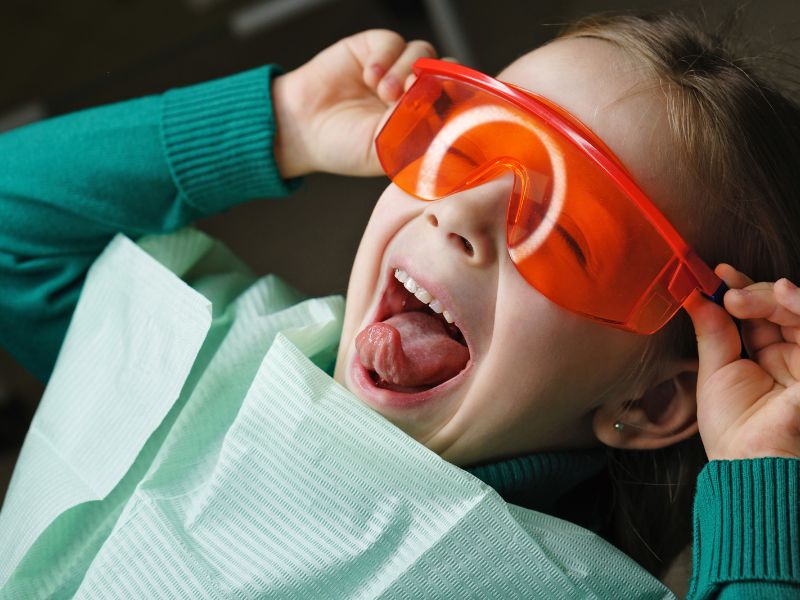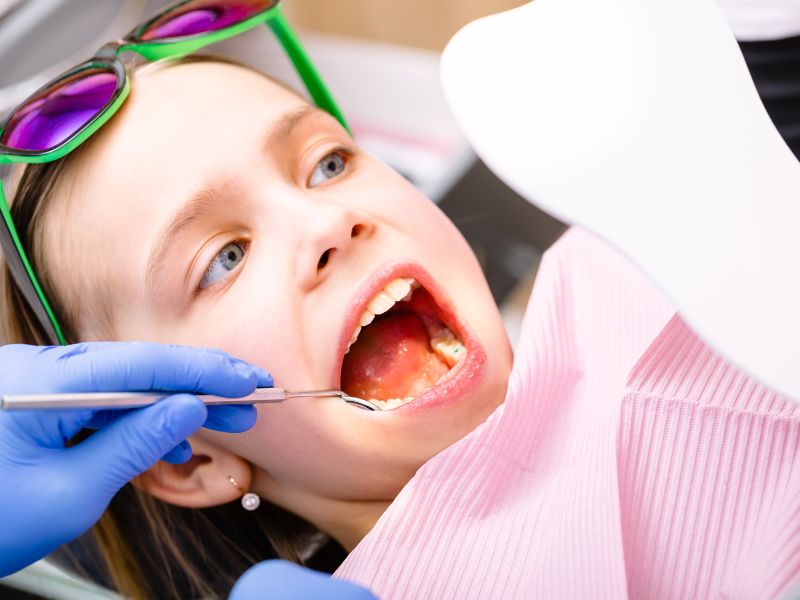Pedodontics
Pedodontics is a branch of dentistry, also known as pediatric dentistry. Dentists specializing in this field focus on the oral and dental health problems of children from infancy to adolescence.
As an Eskisehir pediatric dentist, we treat cavities and other problems in children’s teeth. We teach children dental care habits such as brushing and flossing. We offer various treatment options to help them maintain their dental health. We also perform tooth extractions, fillings, root canal treatment, treatment of gum diseases and other dental surgical procedures.
Why is a Pedodontic Specialist Needed?
Children’s healthy teeth are very important for growth and development and require special care. Therefore, a pedodontics (pediatric dentist) specialist is needed.
Although the majority of children have a fear of dentists, as Eskisehir Dent Ekspres pedodontics (pediatric dentist) specialists, we use appropriate behavioral guidance in children and make the treatment process more comfortable.
For Which Age Range is Pedodontics Treatment Suitable?
Pedodontics is a specialty in dentistry that deals with children’s teeth and jaw structure. For this reason, pedodontic treatments; It usually extends from the time babies get their first teeth to children up to the age of 18.
If you have a child between the ages of 0-18, contact our Pedodontics specialist dentists immediately to take care of their dental health.
What are Pedodontic Services?
Pedodontic services cover a range of treatments and care for children’s dental health. As Dent Ekspres Eskişehir, we can list the pedodontic services we provide as follows:
- Dental examination
- Protective applications
- Tooth stain cleaning
- Tooth filling
- Root canal treatment
- Pediatric zirconium crown
- Tooth extraction
- Placeholders
Other Curiosities
How is pedodontic treatment performed?
Pedodontic treatment includes various procedures such as the treatment of cavities, fractures or damage to children’s teeth. As an Eskisehir pediatric dentist, we use special techniques to ensure that our children are comfortable during these procedures.
How long does it take to complete pedodontic treatment?
The duration of pedodontic treatment may vary depending on the type of treatment, the child’s dental structure, treatment needs and condition. For example, a dental examination, tooth extraction or cleaning can take anywhere from a few minutes to an hour, while more elaborate treatments such as fillings, root canal treatment and zirconium crowns can take several hours.
How do I make an appointment for a pedodontic service?
Parents who want to receive pedodontic services can make an appointment by calling our Eskişehir Dent Ekspres Oral and Dental Health Polyclinic.
How much does the pediatric dentistry service cost?
Fees in pedodontic services may vary depending on the treatment applied, the tooth and the number of teeth to be treated, the material to be used and the number of application sessions. Your dentist will give you information on this subject according to the treatment planning organized after the preliminary examination. You can contact us via our phone numbers to get information about the pre-examination fee.
Which instruments are used for pedodontic treatments?
We use various instruments for pedodontic treatments. We make our choices according to the type of treatment and the needs of the child. However, we can list the main instruments we use for pedodontic treatments as follows:
- Tooth scanning instruments
- Filling material placement tools
- Anesthesia instruments
- Tooth extraction tools
- Ultrasonic devices
Are pedodontic treatments painful?
Pedodontic treatments are usually painless. However, during some procedures, our children may feel slight discomfort or pain. For example, our children may feel slight discomfort during procedures such as anesthesia, tooth extraction or filling.
However, with the technologies and anesthesia methods we use, we minimize the pain or discomfort our children feel. In addition, as a pediatric dentist in Eskisehir; we also try different methods to reduce our children’s fears and anxieties. For example, showing children a fun cartoon or listening to pleasant music during the procedure helps them to spend the procedure more comfortably.


